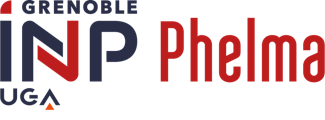Coming at the very end of the Development Cycle of Electronic Systems, Testing demands to access and interact with components developed by other actors, with no direct human interaction and usually with little to no information about the chip interna…
Read time: 3 mins
The context
Coming at the very end of the Development Cycle of Electronic Systems, Testing demands to access and interact with components developed by other actors, with no direct human interaction and usually with little to no information about the chip internal implementation. For this reason, Standardisation has always been a key element: the control and supervision of the Institute of Electrical and Electronics Engineers (IEEE) allowed the development of a flourishing and dynamic ecosystem, where Hardware and Software Providers collaborate to face the open challenges. The most important is probably the JTAG standard (identified as IEEE 1149.1) : first developed in 1991, it provides both hardware architectures to access the chip and software methods to provide advanced automation capabilities. Initially developed for board-level interconnection testing, JTAG is now a key element for SoC internal testing thanks to its ease of usage and, most importantly, to its software ecosystem. These applications were never envisioned in the original standard, which has been stretched thin in an anarchical way, each actor adding custom (and often contradictory) patches and features. To straighten out the situation, IEEE drove the development of both annexes to the original JTAG and new standards to address the new challenges.
Thanks to the StandICT.eu grant, I was able to fund my active participation to two Standardization Groups, PIEEE 1687.1 and the IEEE 1687-2014 refresh, being elected Secretary of the latter. By both participating to weekly meetings and by in-person discussions with the members during the latest Face-to-Face meeting at the International Test Conference I was able to establish a leadership position as an active participant.
Michele Portolan, Grenoble-INP/Phelma
The challenges
Europe is trying to regain a central role in the world of Electronics through a series of steps, such as for instance the European Processor Initiative, which would allow EU-based processing systems, or by trying to build new cutting-edge silicon factories on the continent. This effort is important, but at this moment in time a key factor is missing: almost all Electronic Design Automation (EDA) companies are US-based. Open-Source EDA is struggling for a series of reasons, most notably the difficulty in accessing and supporting industry-critical confidential information. A position in the forefront of Testing Standard development would allow the development of a significant European Know-How in the field, and help moving the gravity center back to the Old Continent.
How standardisation activities help face the challenges
The IEEE 1687-2014 standard and its derivates hold the key to the development of future System-On-Chips, and will shape the world of testing for the coming years. Their potential impact goes beyond “pure” testing: hardware security, in-field monitoring and repair, and automotive safety are examples of fields that are looking with interest at these standards.
The Benefits
IEEE Standard development is a purely voluntary activity: contributors participate on their own time, as allotted by their employer. As such, resources are often tight and are usually limited to time to prepare and participate in the weekly meetings. Actual development of solutions or proof-of-concept is extremely limited, especially at the early phases. The exceptions are actors which are directly impacted by the standard, which are usually focusing on showcasing the early support of their own solutions, but these are usually internal developments, with little communication and access reserved to selected customers, and are primely targeted at providing an important technical advantage over competitors or new actors. These tactics are not free of risk, that is why information sharing is highly beneficial to determine the impact of a standards: regardless of its technical merits, a standard is primarily judged by acceptance, and by limiting the information sharing there is always the possibility that the wider user community won’t be using it.
Future plans
This activity is just one step: the Standardization effort is picking up speed looking for a Publication date by the end of 2023 - beginning of 2024. Only a continuity of the current effort will guarantee a real impact on the final Standard and the future technologies it will enable.


